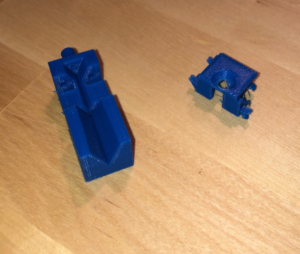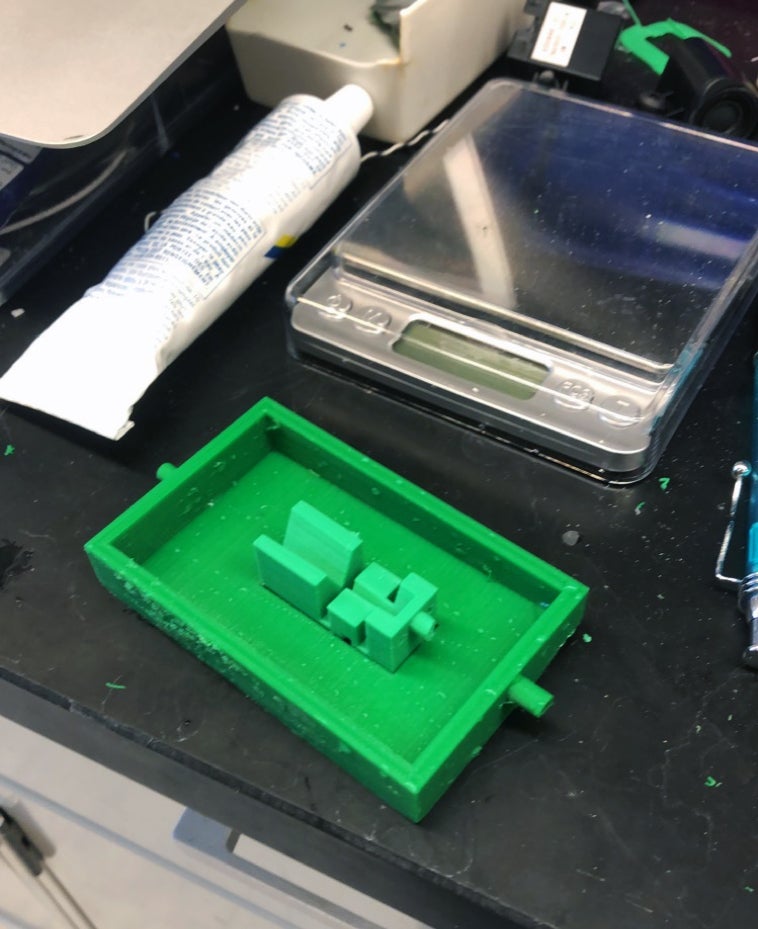Student Designs Better Way to Study Zebrafish
November 18, 2019 – Alexander Brown (C’20) created a new product to help him research the brains of zebrafish. Due to the success of its design, further research on the neurobiology of zebrafish at Georgetown will be more streamlined and effective and will aid in our understanding of the human brain.
Fish Brain
Brown is a double neurobiology and economics major. With the help of his faculty mentor Dr. Jagmeet Kanwal, he is assessing the behavior of zebrafish that have Autism Spectrum Disorder via electrophysiology recordings from certain parts of these fishes’ brains and spinal cords by studying action potentials in various parts of the brain and how they respond to stimuli. The protocol that Brown is developing is part of a larger Autism Behavior Maze project that tests socialization patterns and memory.
“Specifically, we want to examine if there is a difference between wildtype and autistic fish in terms of learning which way in the maze will lead them to a social reward,” says Brown. “This is not connected to my project in particular, but we may use the designs and techniques in my project to understand the results in the autistic experiments.
A member of the RISE Program at Georgetown, Brown started his research during the spring semester of his junior year.
The length of time dedicated to this project has allowed him to explore ways to improve the protocol. One such enhancement is the development of better technology to capture the electrical signals from the zebrafish.

Designing the structure of the apparatus
“These fish are difficult to do electrophysiological experiments on because they are small, need a constant flow of water, and have delicate bodies that must be supported yet not crushed by the structure,” says Brown. “But the research we do with them is very important. Zebrafish are believed to have at least 70% of the DNA that humans do, they reproduce very quickly, and even exhibit very similar social behavior to people such as interaction and forming relationships. They also have similar neurocircuitry as the human brain.”
Making a Better Device
In order to create an improved device to study these zebrafish, Brown went to the Maker Hub, Georgetown’s one-stop-shop for any creative project, to build a structure that would hold the zebrafish without hurting them.

Finished prototype design
The Maker Hub, which is open to all Georgetown students, houses all types of quality equipment including a sewing loom, a bookbinding shop, Arduino boards, and most importantly for this project, 3-D printers.
“Although the neurobiology lab has a Monoprice printer like the one at the Maker Hub, we have found the Maker Hub’s Ultimaker printers to be much more effective,” says Brown. “They also have two other types of 3D printers that are more precise and sophisticated than even the Ultimakers.”
Building Better Research
Due to the quality and efficiency of these machines, Brown has designed 15 different prototypes since September to perfect his model with the help of Maker Hub manager and adjunct professor Don Undeen.

The apparatus in action
“With the aid of this technology, we will look closely into areas like memory, learning, and sound perception,” says Brown.
Due to this new apparatus design, Brown and future researchers at Georgetown will be able to study important neurological functions in brains similar to our own which will ultimately contribute to a deeper understanding of our own physiology and humanity.
